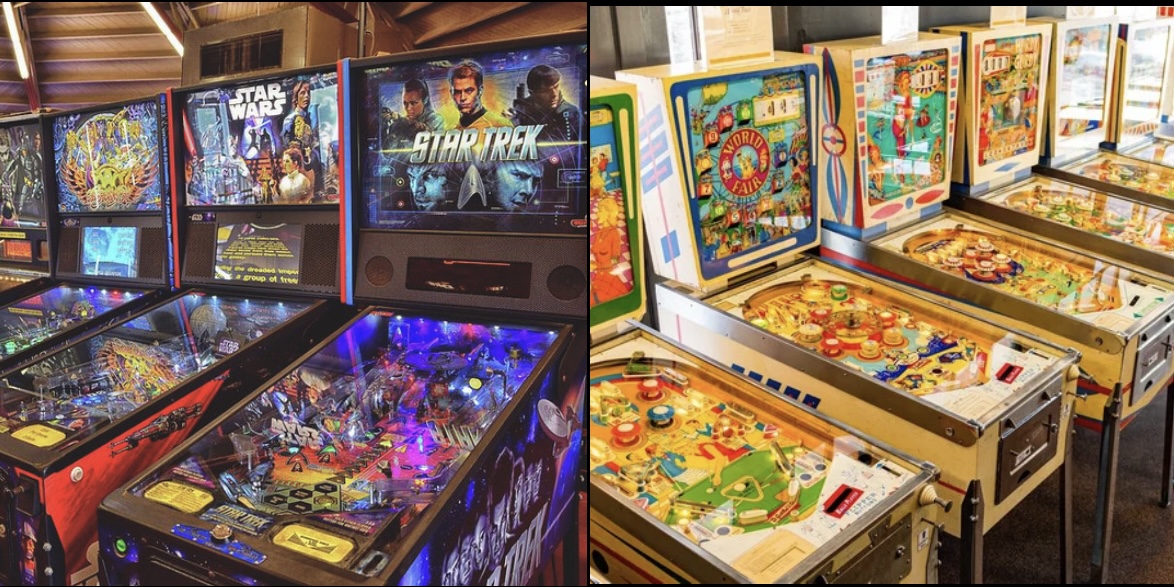Pinball machines have been captivating players for generations with their flashing lights, clattering bumpers, and the distinctive sound of steel balls ricocheting off obstacles. But have you ever wondered about the origins of these beloved gaming devices? Join us on a journey through time as we explore the fascinating history of pinball machines and how they came to be.
The Birth of Pinball: A Humble Beginning
The story of pinball traces its roots back to the 18th century in France, a time when a game known as “Bagatelle” emerged and captivated the leisure seekers of the era. Bagatelle set the stage for the evolution of pinball as we know it today. In this early version, players employed cues to skillfully shoot balls across a wooden table, with the objective of landing them into holes that held varying point values. This precursor to pinball captured the essence of the game’s core elements, combining dexterity and chance.
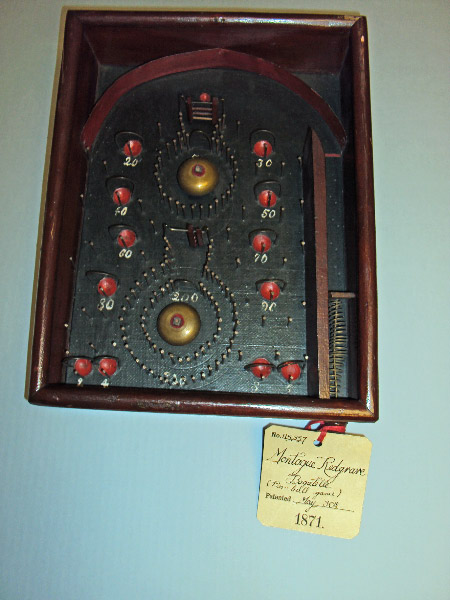
Yet, it was not until the late 19th century that the modern pinball machine truly began to take shape. The pivotal moment in this evolution occurred in 1871 when British inventor Montague Redgrave patented a groundbreaking device called the “ball shooter.” This invention introduced a spring-loaded plunger, which players used to propel a ball into a scoring area. The ball shooter was an ingenious innovation, laying the crucial foundation for the mechanical marvels that would define the future of pinball. Redgrave’s invention paved the way for the sophisticated pinball machines that would become emblematic of arcades and entertainment venues worldwide.
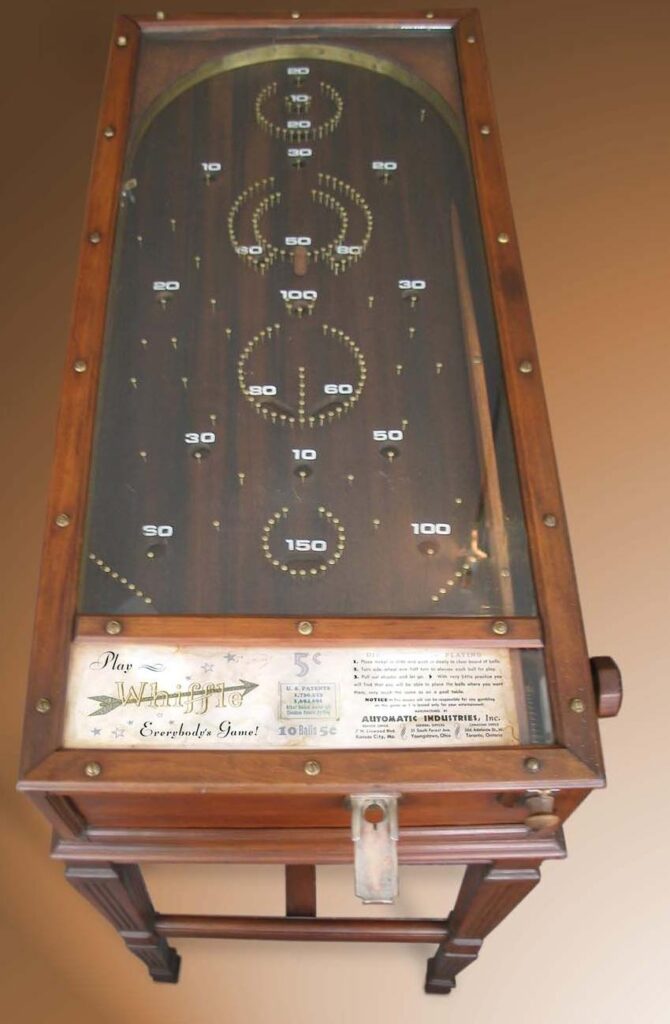
The subsequent decades witnessed a rapid technological advancement of pinball machines, with innovations such as electrification, bumpers, flippers, and intricate scoring mechanisms. These developments transformed pinball into an exhilarating, fast-paced, and skill-based game that enthralled players of all ages. The story of pinball, from its modest beginnings in Bagatelle to the highly complex and visually captivating machines of today, reflects a remarkable journey of innovation and entertainment that has endured for centuries.
Electrifying Times: The Emergence of Electric Pinball
The early 20th century marked a significant turning point in the evolution of pinball as electricity made its entrance into these games. With the incorporation of electric components, pinball machines became infinitely more dynamic and engaging. Electric lights were introduced to illuminate the playing field, adding a visually captivating element to the game. Alongside this, the inclusion of electric bumpers injected an exciting randomness into the gameplay, as these bumpers sent the ball careening unpredictably around the table, challenging players to react with lightning-quick reflexes.
In this transformative era, one pioneering figure emerged as a driving force behind the pinball revolution. David Gottlieb, a visionary entrepreneur, founded the D. Gottlieb & Co. pinball manufacturing company in 1927. His notable creation, the “Baffle Ball,” took the pinball world by storm. This game, which combined elements of bagatelle with electric features, was an instant hit and inspired a new generation of pinball enthusiasts. The success of the “Baffle Ball” not only cemented Gottlieb’s place in pinball history but also paved the way for other innovators and entrepreneurs to venture into the burgeoning pinball industry.
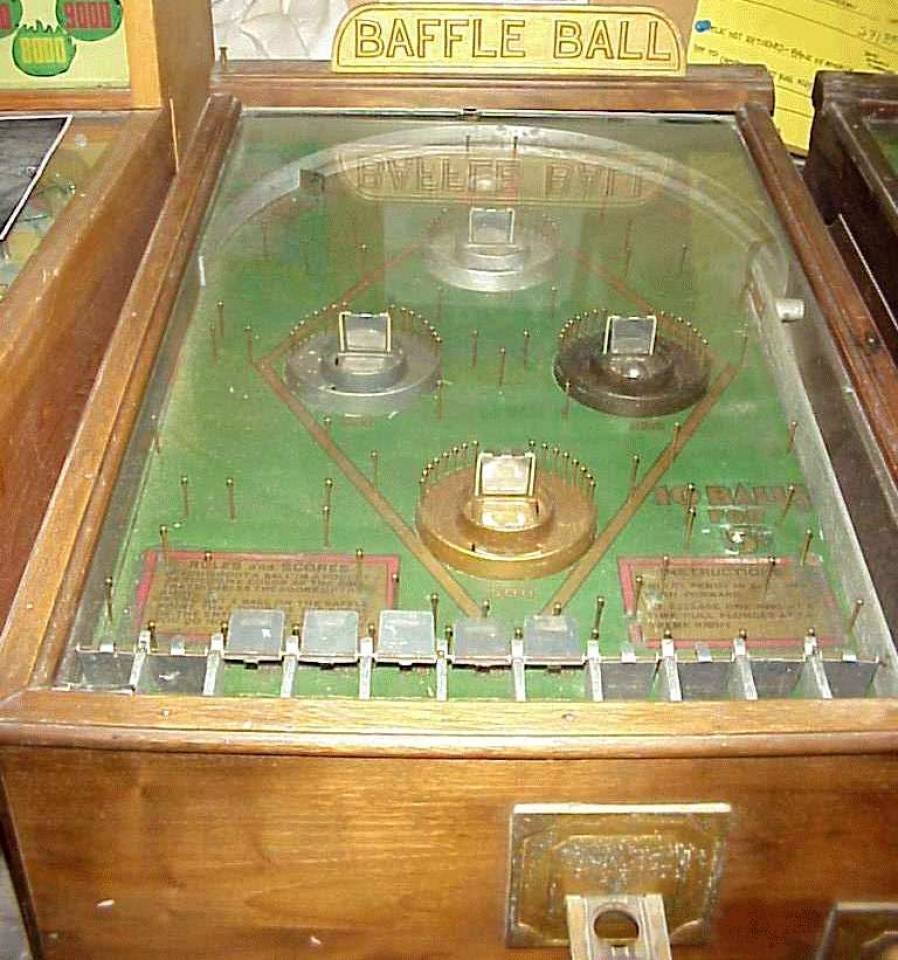
David Gottlieb’s impact on pinball extended beyond just his innovative machines. He played a pivotal role in shaping the pinball industry’s business landscape, contributing to the commercialization and distribution of these machines. The success of D. Gottlieb & Co. helped establish the pinball machine as a staple in arcades and entertainment venues, making it a widely recognized form of entertainment.
Furthermore, the adoption of electric components brought about a new era of creativity in pinball design. Manufacturers and designers started to experiment with more complex scoring mechanisms, ramps, and even character-themed machines that appealed to a broader audience. These innovations expanded the appeal of pinball beyond the traditional gaming community, drawing in a diverse range of players, from children to adults.
In sum, the early 20th century represented a pivotal period in pinball’s history, characterized by the infusion of electricity and the visionary contributions of figures like David Gottlieb. The innovations of this era not only made pinball more dynamic and engaging but also laid the foundation for the continued growth and diversification of this beloved pastime.
The Flipper Revolution: Adding Precision to Play
The 1940s marked a monumental leap in pinball technology with the introduction of flippers, a development that forever altered the nature of the game. Prior to this innovation, pinball players had limited control over the ball’s trajectory, relying mainly on the gravitational pull and the machine’s layout to determine the course of play. The incorporation of flippers, which could be controlled by the player, was nothing short of a game-changer. It transformed pinball from a game of chance and gravity into one of skill and strategy, ushering in a new level of excitement and engagement.
The inaugural flipper-controlled pinball machine, aptly named “Humpty Dumpty,” was conceived by the ingenious mind of Harry Mabs and made its debut in 1947. This groundbreaking machine featured six flippers, three on each side of the playing field, effectively marking the inception of a fresh era in pinball history. With flippers, players now had the ability to influence the ball’s trajectory, adding a dynamic layer of control and challenge to the game. The introduction of flippers revolutionized pinball, making it more interactive and requiring players to develop precise timing and aiming skills, thereby elevating the game to new heights of popularity and skill.
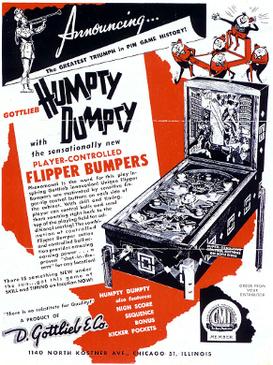
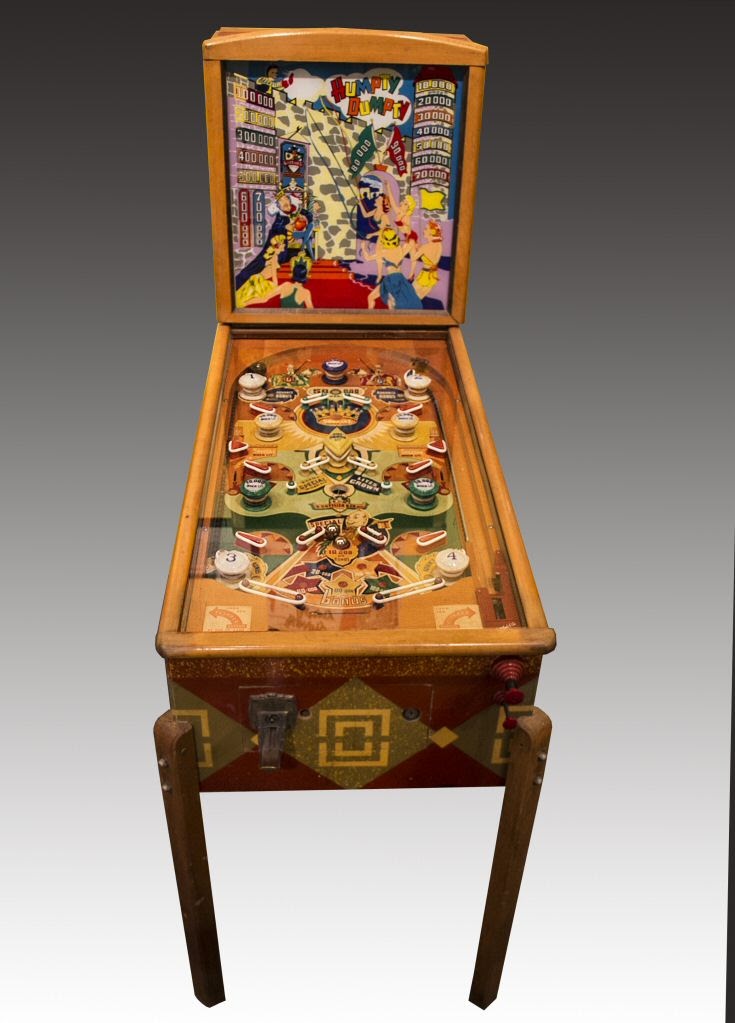
Incorporating flippers into pinball machines didn’t just change the way the game was played but also opened doors for innovative designs and layouts. Pinball designers began to create more complex and strategic games, introducing elements like lanes, ramps, and targets that were now accessible through the use of flippers. This transformative period in pinball technology not only solidified the game’s place in popular culture but also laid the foundation for the diverse and captivating pinball machines that would follow in the subsequent decades.
The Golden Age of Pinball: Pop Culture Phenomenon
The 1950s and ’60s stand out as the golden age of pinball, a period that witnessed a remarkable surge in the popularity and innovation of these captivating machines. Pinball machines of this era became increasingly elaborate, boasting intricate artwork, imaginative themes, and creative designs that spanned a wide range of subjects. These themes ranged from space exploration, in line with the space race fever of the time, to popular culture icons like rock and roll stars and movie idols. The marriage of art and gameplay transformed pinball into a true form of interactive entertainment.
Arcades and bars served as the primary venues where pinball enthusiasts gathered to enjoy these marvels of engineering. Pinball machines quickly became a staple in these establishments, providing entertainment for people of all ages. The experience of playing a pinball machine was not just about racking up points but also immersing oneself in the unique theme, art, and design of each machine, adding an extra layer of engagement and appeal.
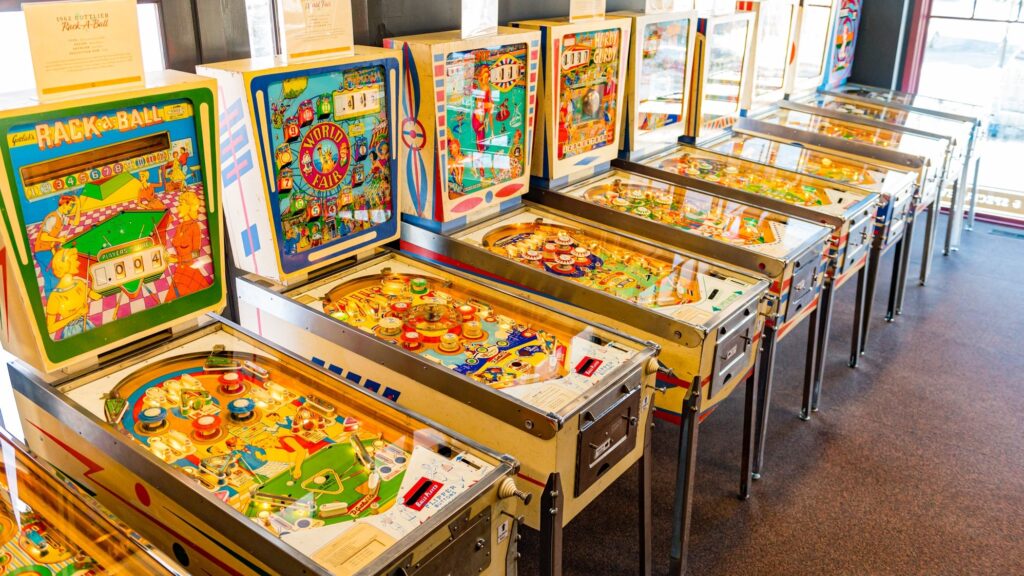
Despite the resounding success and cultural prominence of pinball during this era, it also faced significant challenges. Concerns about gambling and delinquency led to bans and restrictions on pinball in various cities and states. Pinball had often been associated with gambling due to the potential for winning free games, and this misconception triggered legal battles to legitimize pinball as a game of skill rather than chance. These legal struggles, sometimes referred to as the “pinball prohibition,” were instrumental in shaping pinball’s future. Pinball advocates, including manufacturers and players, fought tirelessly to establish the game’s legitimacy, ultimately leading to the lifting of many bans and paving the way for pinball’s continued growth.
The golden age of pinball was a time of contradictions and evolution. While it celebrated the technological and artistic achievements of pinball machines, it also grappled with societal concerns. The perseverance of pinball enthusiasts in proving that it was a game of skill not only secured its place in arcades but also laid the foundation for the continued popularity and innovation of pinball into the modern era.
Digital Evolution: The Transition to Video
The 1970s marked a pivotal juncture in the history of arcade gaming as video games emerged on the scene. This new form of entertainment posed a formidable challenge to traditional pinball machines, as video games gained immense popularity. To remain competitive, pinball manufacturers recognized the need to adapt and modernize their machines. The solution was to incorporate electronic components and digital displays into their designs, effectively blending the classic appeal of pinball with the innovation of the digital age.
A notable example of this transition was Bally’s “Fireball,” released in 1972. “Fireball” is considered one of the iconic pinball machines of this era. It featured a groundbreaking spinning disc at the center of the playfield, introducing an element of unpredictability and excitement to the game. The spinning disc, along with electronic sound effects, not only enhanced gameplay but also provided players with a sensory-rich experience that was a stark departure from traditional pinball. This innovative approach not only attracted new players but also retained the loyalty of existing enthusiasts by demonstrating the adaptability and dynamism of pinball in the face of technological change.
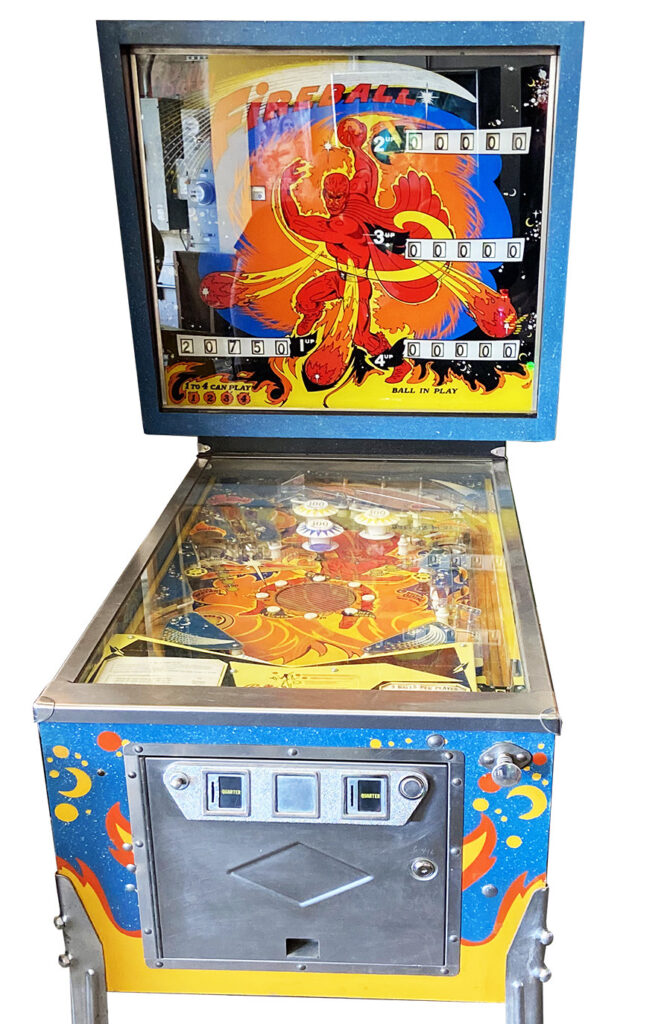
While video games undoubtedly made their mark on the arcade scene, pinball’s ability to embrace and incorporate digital technology allowed it to endure and thrive. The 1970s and the introduction of machines like “Fireball” showcased pinball’s resilience and capacity to evolve, ensuring its continued relevance in the world of arcade gaming. The era’s fusion of mechanical and electronic elements laid the foundation for the modern pinball machines we see today, which continue to captivate players with their blend of tradition and innovation.
The Resurgence of Pinball: A Nostalgic Revival
In recent years, pinball has experienced a remarkable resurgence in popularity, driven by a combination of nostalgia and the unwavering passion of a dedicated community of enthusiasts. This resurgence has breathed new life into a classic form of entertainment that had, at times, faced uncertainty in the face of changing gaming landscapes. Many classic pinball machines have been lovingly restored to their former glory, thanks to collectors and enthusiasts who take pride in preserving the heritage of these iconic games. Additionally, the pinball industry has seen a revival in the design and production of new machines, marrying the essence of the past with modern technology to create engaging and visually stunning pinball experiences.
Pinball competitions and leagues have also played a significant role in the resurgence of the game. These events have gained traction around the world, attracting players of all ages and skill levels. Competitive pinball has given enthusiasts a platform to showcase their talents, share their love for the game, and foster a sense of camaraderie within the community. The competitive aspect adds an exciting dimension to pinball, driving players to hone their skills and continuously seek new challenges.
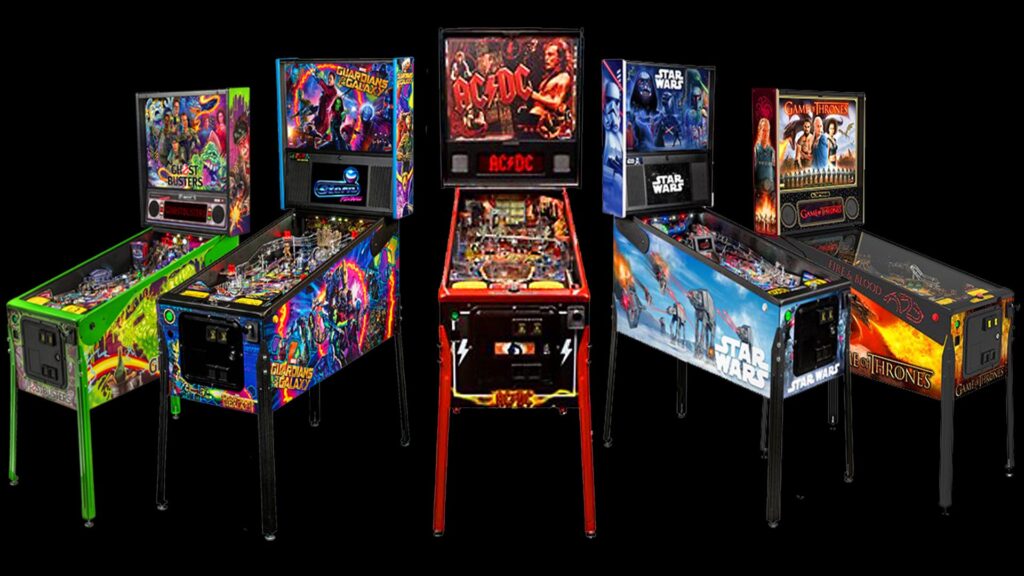
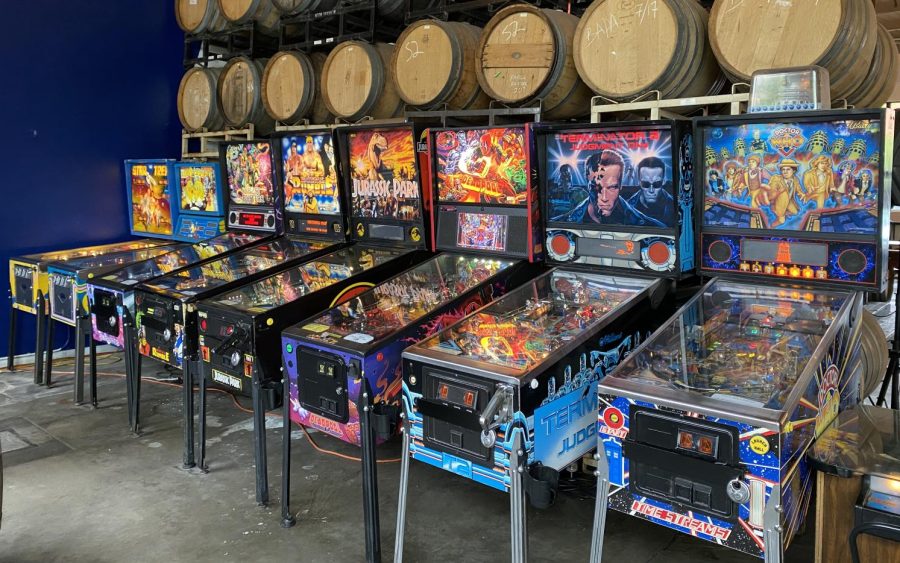
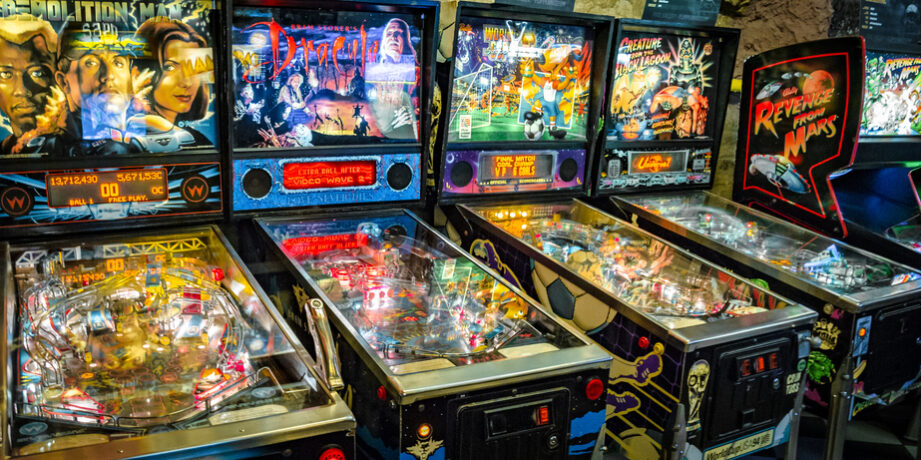
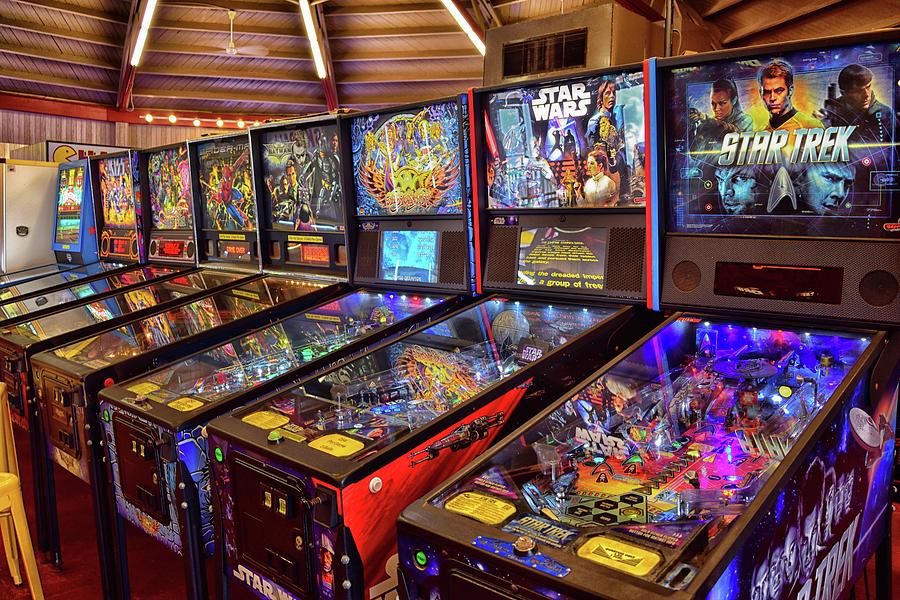
Today’s pinball machines represent a harmonious fusion of classic mechanical elements and cutting-edge technology. They are designed to appeal to a new generation while preserving the essence and spirit of the game that has captivated players for generations. The combination of intricate mechanical components with state-of-the-art electronics results in engaging gameplay experiences that are both nostalgic and thoroughly modern. Pinball continues to be a testament to the enduring appeal of this form of entertainment and the creative minds that have kept the game alive and evolving.
Stepping up to a pinball machine today provides a unique opportunity to appreciate the long and fascinating journey that brought this timeless form of entertainment into existence. Pinball’s resilience, from its humble beginnings to its resurgence, speaks to the enduring human fascination with games that challenge skill and provide endless fun. It’s a reminder that even in our increasingly digital world, there’s a special place for the tactile and kinetic thrill that only pinball can deliver, making it a beloved icon of both gaming history and culture.

